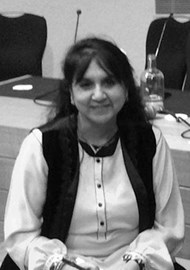The aim of this retrospective study was to describe the surgical results and fundus autofluorescence (FAF) patterns occurring in sub-macular haemorrhage (SMH) of duration <60 days in age-related macular degeneration (AMD). Notes from 39 eyes of 39 patients with SMH, were reviewed. Groups 1 included 18 eyes of 18 subjects who were treated with pars plana vitrectomy (ppV) + subretinal tissue plasminogen activator (tPA) + VEGF plus intravitreal tPA + anti-VEGF + sulfur hexafluoride (SF6) tamponade. Group 2 included 21 eyes of 21 patients who were treated with intravitreal tPA + anti-VEGF + SF6. The mean duration of SMH was 23 days (1–60 days, median six days) for group 1, and six days (1–60 days, median one day) for group 2. All subjects had at least 12 months of follow-up during which they received continuous anti-VEGF treatment. Postoperatively three FAF patterns were observed in both groups. Pattern one showed normal FAF in the fovea with paracentral hyper autofluorescence (translocated blood). The inner segment-outer segment line and external limiting membrane (ELM) were visible. These patients had had their surgery in the first 24 hours after the appearance of SMH. Pattern two showed central hypo autofluorescence with circumferential hyper autofluorescence. Pattern three was massive central hyper autofluorescence. At the final control, the fovea was still elevated, and an almost complete disruption of the photoreceptors was visible. Pattern one (normal autofluorescence) was observed in 5/18 in group one and 5/21 group two. Pattern two was observed in 6/18 in group one and 7/21 in group two. Pattern three was noted in 7/18 in group one and 5/21 in group two. Visual acuity was statistically significant for both groups: In group 1 it was 0.01 Snellen (2.0logMAR) to 0.11 Snellen (0.96logMAR) (p=0.019) and in group 2 it was 0.11 Snellen (0.96logMAR) to 0.33 Snellen (0.48logMAR) (p=0.0007). Central retinal thickness also decreased with statistical significance for both groups (p<0.05). Duration of SMH was shorter in group 2, which was also associated with better outcome. The study concluded that FAF patterns did not depend on the treatment modality, but rather on the duration of SMH before treatment. Sub-macular haemorrhage if not treated promptly may result in long-standing photoreceptor and retinal pigment epithelium defect, which is represented by hypo- and hyper autofluorescence. Performing a subretinal injection of tPA and anti-VEGF does not cause any defects associated with the injection site. Prompt treatment of SMH and further continuation of anti-VEGF treatment is mandatory to maintain vision. Limitations: Retrospective nature. Small number of cases.
Autofluorescence patterns in subretinal haemorrhages associated with neovascular age-related macular degeneration
Reviewed by Sofia Rokerya
Fundus autofluorescence patterns in subretinal hemorrhages associated with neovascular age-related macular degeneration.
CONTRIBUTOR
Sofia Rokerya
MBBS MRCOphth FRCSI, King's College University Hospital, UK.
View Full Profile



